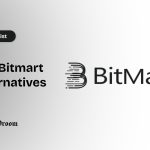Injective Protocol is one of the top platforms that provides traders unlimited access to various markets. The protocol is a vast ecosystem that offers a variety of decentralized services. Every element of the Injective protocol is streamlined to support and enhance the functionality of its decentralized exchange. This article will provide more insights into an interesting project that is perfectly crafted to meet growing demands in web3 finance.
Injective protocol offers decentralized exchange services like cross-chain margin trading, derivatives, and forex futures trading. Injective Protocol provides traders with a wide range of markets, allowing them to trade their preferred asset assets without any hurdles. The protocol has a native coin known as INJ and it functions as its governance token.
More so, the protocol has managed to distinguish itself from other decentralized exchanges because it didn’t adopt the Automated Market Maker (AMM) procedure to control liquidity. The decentralized exchange stands tall among its peers because it uses the order book model which is more synonymous with centralized stock and cryptocurrency exchanges.
The network doesn’t charge gas fees to complete users’ transactions, instead, it only charges standard market maker and taker fees. Moreover, users can only pay for the standard market and taker fees using the native token of the protocol; INJ. It is safe to say that the protocol focuses on complementing the translucency of decentralized exchanges (DEX) with the orderliness of traditional finance.
It’s worth establishing that the Injective protocol is based on the Cosmos network as a layer 2 chain. Likewise, Injective leverages chain bridges which allow users to access tokens from other networks like Ethererum.
The protocol made a name for itself as the first network within the Cosmos ecosystem to natively support assets on Ethereum. Users of Injective can as well access tokens from Inter-Blockchain Communication Protocol (IBC) blockchains and non-Ethereum Virtual Machine (EVM) networks.
Injective Protocol Project Team
Injective Labs is the first entity that contributed to the development of the Injective Protocol. The firm is a research and development company co-founded by Eric Chen. Before establishing the organization, Chen was prominent as a trader and he worked at a renowned crypto fund. While working with the crypto fund, the co-founder oversaw the development of innovative market-neutral trading initiatives in the blockchain landscape.
Chen masterminded the crypto fund’s investment into top companies like Ox, Cosmos, and ChainLink. The co-founder is a cryptographic researcher and he has a robust knowledge of blockchain protocols. His experience also cut across the traditional finance sphere.
Another distinguished personality connected to the project is Albert Chon who is the Chief Technology Officer (CTO) of Injective Labs. He graduated from Stanford University, bagging a Bachelor’s and Master’s degree from the institution.
At one point, Chon worked as a development engineer at Amazon. He made a name for himself in the crypto landscape by inventing a new Ethereum standard that is in use by a host of projects in the industry today. Mirza Uddin, Chris Choi, Noah Axler, Julie Lee, Bojan Angjelkoski, and Nam Dang are prominent members of the Injective Protocol team.
Tokenomics of Injective
Distribution
The total supply for $IJN is 100,000,000 and its allocation is directed heavily towards the growth of its ecosystem. As revealed, 36.33% of the token’s total supply is allocated to its ecosystem development. The allocation model set aside 20% of the token’s total supply for the team while it committed 16.67% to private sale.
Also, as a project that prioritizes a well-established community, 10% of the allocation will be channeled towards community growth. 9% of the token total supply went to its Binance Launchpad sale, while 6.0% was earmarked to the seed sale. Likewise, project advisors received 2% of the token’s total supply.
Use Cases
According to the official website of the project, INJ has three (3) major use cases. The token has significant relevance to the Injective ecosystem because it covers crucial areas relating to the protocol.
Governance
INJ serves as a partway for its holders to participate in the Injective ecosystem. Holders of the token automatically become a member of the Injective decentralized autonomous organization (DAO).
Meanwhile, the DAO controls the Injective exchange which gives every holder of IJN direct access to trade and create market derivatives. Similarly, as a member of the DAO, holders of injective can make proposals and vote on issues relating to the exchange.
Staking
Holding the INJ token gives the holder the opportunity to become a network validator on the Injective Chain. Also, holders of the token can as well stake their INJ by trusting it with an existing chain validator. In both cases, holders stand the chance to earn rewards for protecting the Injective network.
The staking option is open to both validators and delegates. Furthermore, the staking option has a predetermined reward ratio. Every 150 INJ stake comes with a 5% annual return.
Collateral Derivatives
Another major use case of INJ is that it can function as a stand-in stablecoin to supply collateral for margin trading and the use of Injective’s derivatives market. Correspondingly, the token can function as a collateral backing and insurance pool staking in specialized futures markets. This particular use case of the token allows those who stake INJ to receive interest in their locked liquidity provider coins.
Competition
Avalanche
Avalanche is a layer one blockchain that is popular for its vast support for dApps and custom networks. The network has an enormous ecosystem that houses a host of dApps and DeFi solutions. Also, Avalanche focuses on offering a high speed by processing about 6,500 transactions per second without compromising scalability.
The intense focus on high throughput is aided by the network’s distinct architecture. Avalanche is equipped with three different blockchains; X-chain, C-Chain, and P-chain. Each blockchain within the Avalanche network has its respective responsibilities which have aided the project to stand out among its peers.
NEAR Protocol
NEAR is another alternative to INJ. The NEAR Protocol is a layer one network structured as a community-oriented cloud computing platform. The network is designed to proffer solutions to blockchain trilemma. Hence, the focus on tackling issues relating to popular blockchains made NEAR Protocol ideal for dApps developers and users.
NEAR Protocol is popular among developers because it provides them with modular elements that aid them to kick-start projects like token contracts and NFTs swiftly. Moreover, the protocol has simplified the onboarding of other networks by splitting addresses and designing dApps with registration stipulations that are similar to what users are familiar with.
ChainLink
Since its establishment in 2017, Chainlink has established itself as one of the top networks that allow blockchains to safely interact with external data feeds.
With the aid of a decentralized oracle network, Chainlink permits blockchains to interact with events and payment systems by supporting them with important details that are crucial for complex smart contracts. The provided details allow complex smart contracts to evolve into a dominant form of virtual agreement.
Additionally, Chainlink as a blockchain abstraction layer has proven effective in enabling universally connected smart contracts. It is supported by an enormous open-source community of data suppliers, node operators, smart contract builders, blockchain auditors, and analytical experts. The project has a vast community that has contributed massively to the popularity of its native token, LINK.
Future of Injective
Investors and Experts are optimistic that IJN will enjoy a bullish run in the near future. A substantial portion of their prediction relies solely on how the project has managed to attract the attention of users. They projected that the growing attention on the protocol will increase over the years which in return will boost the value of its native token; INJ.
Meanwhile, according to the project’s roadmap, there are plans to collaborate and integrate with some established projects in the industry. Also, Injective Protocol intends to roll out initiatives that are aimed at growing its ecosystem and establishing its community. There are growing signs that Injective Protocol may compete with some of the biggest names in the near future.
Drawback and Weakness
Despite having attractive sides, Injective Protocol has its setbacks too and users must consider them before embracing the platform. You may not enjoy voluminous liquidity when using the derivative exchange because it hasn’t gained enough ground compared to well-known exchanges in the crypto market.
Another high-profile setback of this interesting project is its reliance on centralized price feeds for a noticeable part of its market. Despite being a decentralized protocol, the dependence on central price feeds can expose traders to price manipulation and deficiencies in pricing data.
Conclusion
To an extent, INJ looks like a lucrative investment. Various publications and prediction outlets are backing the token to soar significantly in the nearest future. However, we are convinced by some notable features of the project which made it look more transparent and result-driven.
Injective Protocol has a robust community that consists of developers, DeFi enthusiasts, market makers, and institutional and individual investors. In addition, Injective Protocol is one of the top projects in the web3 finance landscape. It has a straightforward roadmap that focuses on advancement, collaboration, and integration.
We can attest that Injective Protocol has a recognizable team. The project’s team are not pseudonymous inventors without a trace, in fact, a substantial part of the crew is well known in the industry. Hence, investors can trust in the project and invest in the token. Nonetheless, all cryptocurrencies including INJ are volatile and their value mostly fluctuates. We urge investors not to commit more than what they can lose in the project.



















